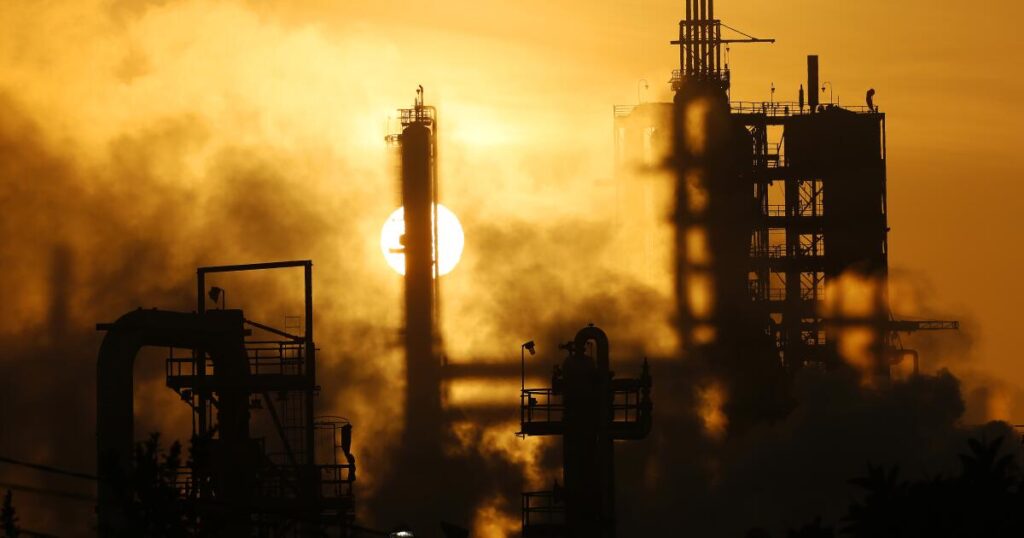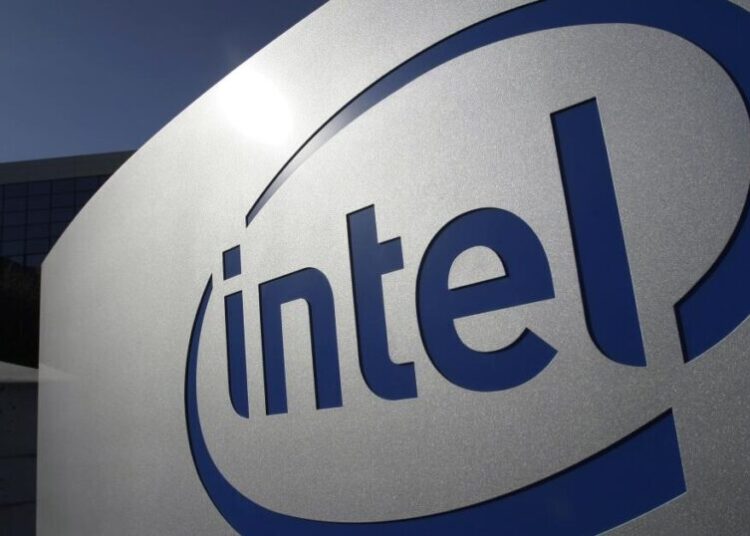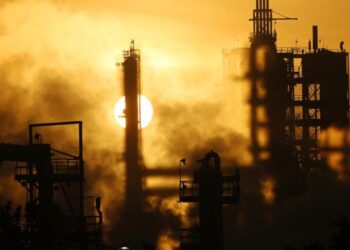California has long been a “fuel island” — a state whose gasoline and diesel markets are isolated from the rest of the country — but that could soon end under a proposed plan to build the first-ever pipeline to bring refined products directly to the West Coast.
Known as the Western Gateway Pipeline, the project from oil major Phillips 66 and global pipeline giant Kinder Morgan would deliver gasoline, diesel and jet fuel to Arizona and California from as far east as Missouri by 2029. The companies are currently scoping out demand and seeking commitments from customers in what is known as an “open season.”
Kinder Morgan is already a major pipeline operator in California. Officials from both companies say the pipeline would create a vital connection between the Midwest and California, where a combination of unique fuel requirements and geography have created a market that is almost entirely dependent on fuel brought in by ship plus in-state supplies. That can leave residents vulnerable to price spikes from even small disruptions.
California already pays more for gasoline than any other state, with prices currently hovering around $4.63 a gallon compared with the U.S. average of $3.10, according to AAA.
The pipeline proposal comes as California navigates the critical trade-off between reducing one of the biggest drivers of climate change — gasoline and diesel — and maintaining consumer affordability. The state is trying to electrify transportation while bracing for the closure of two major refineries in Wilmington and Benicia that together account for nearly 20% of California’s refining capacity. Their looming shutdown is creating jitters about higher prices at the pump.
Experts say the pipeline proposal signals that energy companies expect California to remain dependent on gasoline for years, even as the state pursues clean transportation and other ambitious climate goals.
“It’s a huge capital investment, and it’s an investment that is a bet that the prices in the West will stay high enough that they can recover the cost,” said Severin Borenstein, faculty director of the Energy Institute at UC Berkeley’s Haas School of Business.
Globally, customers are snapping up electric vehicles, but in the U.S. the picture is more complicated. There have never been more EV options on the table and the charging network is growing. At the same time, the Trump administration recently eliminated federal rebates on new and used EVs and has also moved to block California’s landmark ban on the sale of all new gas-powered cars by 2035.
Meanwhile, Gov. Gavin Newsom recently approved legislation that will allow for 2,000 new oil wells to be drilled in Kern County, in part to help keep the state attractive to oil companies.
“We have a love/hate relationship with gasoline and petroleum products,” Borenstein said. “We’d like to think of ourselves as getting off of them, but in reality we’re highly dependent, and we hate high prices. So the fact is, if we don’t get more supply as we lose these refineries, prices are going to go way up.”
The Western Gateway Pipeline would combine new and existing infrastructure. From Borger, Texas, to Phoenix, Ariz., the line would be new. An existing line that connects Phoenix to Colton, Calif., would see its flow reversed to enable east-to-west flow. There would be an optional connection from Colton to Las Vegas. A pipeline between St. Louis and Texas would also be reversed to move barrels from the Midwest into the new system.
In all, the project could supply 200,000 barrels per day of refined gasoline or diesel directly into Arizona and California, according to the companies.
Experts say that could make up for some of the loss from refineries, which otherwise would have to come from more imports. The West Coast received about 86,000 barrels of gasoline imports and 9,000 barrels of diesel from overseas daily in August, the most recent month for which there were data, according to the U.S. Energy Information Administration.
The region also received 151,000 barrels of gasoline and 46,000 barrels of diesel per day from other U.S. areas, including the Gulf Coast and the Rocky Mountains, via tanker, barge and rail.
“More availability of supply would almost certainly help to reduce fuel prices in California, all else equal,” said Kevin Hack, a petroleum economist with EIA. However, he cautioned that global crude oil price changes and other factors could still affect California gasoline prices.
For some, the pipeline represents a step in the wrong direction.
“It’s a band-aid on a much bigger challenge,” said Ryan Schleeter, communications director with the nonprofit The Climate Center. “The solution is really to chart the course for a managed transition away from relying on gas to a more electrified future.”
Not only are pipelines prone to leaks and spills, but California should not be investing in new fossil fuel infrastructure, Schleeter said. Diesel consumption in the state has been flat the last decade, and annual gasoline demand has declined by about 2.1 billion gallons since 2016, according to state data.
Schleeter pointed to a recent report from California’s Department of Petroleum Market Oversight that confirms the presence of a so-called “mystery surcharge” of 41 cents per gallon in California that can’t be explained by state regulations, taxes or production costs — most of which represents increased profit for oil companies with no direct public benefit, the report says.
“Obviously price spikes and shocks to consumer prices in the short term aren’t a good thing, and those harm working class people the most,” Schleeter said. “But if we’re looking at ways to make gas more affordable in the short term, I think we should be looking more at the refiner profit margins.”
Ryan Cummings, chief of staff at the Stanford Institute for Economic Policy Research, said a pipeline would gird residents against price spikes caused by disruptions such as last month’s Chevron refinery fire in El Segundo or last year’s unplanned maintenance at multiple northern California refineries. The additional imports from overseas needed in response to these disruptions can take six weeks to arrive, he said.
“So if we had a pipeline coming into the state that could deliver [Midwest] product to us in five days or so, that would be huge for California consumers,” Cummings said.
Like Borenstein, he said the pipeline proposal is a sign that Phillips 66 and Kinder Morgan believe California will continue to be dependent on gasoline for many years, despite its decarbonization goals.
“If they’re going to build this in the next five years, that’s them saying that at a minimum for the next decade, this thing’s going to be worth it,” Cummings said.
The Western Gateway Pipeline is far from a done deal. The open season runs through Dec. 19.
Kinder Morgan spokesperson Taylor Smith declined to comment on interest the company is seeing or commitments so far. Officials with Phillips 66 did not respond to a request for comment.
Should it move forward, the pipeline could be completed by 2029 pending necessary permits and regulatory approvals, according to the companies. Precisely which agencies and entities would need to sign off on the project depends on the pipeline route, but “are likely to involve authorizations to cross federal lands, mitigation of any impacts to endangered species and permits from the Army Corps of Engineers for any discharges to waters of the U.S. caused by any pipeline construction,” Smith said.
It is also not yet clear which state agencies would need to sign off. They might include the State Lands Commission, the Office of the State Fire Marshal and the California Energy Commission.
In a statement, officials with the California Energy Commission appeared open to the idea, saying a pipeline could offer an alternative source of imports and reduce the amount of fuel California exports to its neighboring states, but that it would be important to understand how any new supply would affect state and regional fuel markets, including existing California refiners.
“The CEC continues to engage with stakeholders, including industry participants and regional partners, to evaluate strategies for managing fuel supply and price stability through the transition to a clean transportation sector, while also balancing the needs of communities, workers, consumers and the environment,” the agency said.
The nation is watching how California manages the slow decline of its gasoline refinery industry, said Cummings, of Stanford.
“As we’re taking offline the dirty energy and trying to bring online the clean energy, that leaves a lot of possibilities for big bumps in that transition path in which consumers are susceptible to price spikes,” he said. “It’s a difficult problem to solve, and California is kind of solving it in real time.”
The post California could get its first gasoline pipeline. Would that lower gas prices? appeared first on Los Angeles Times.




